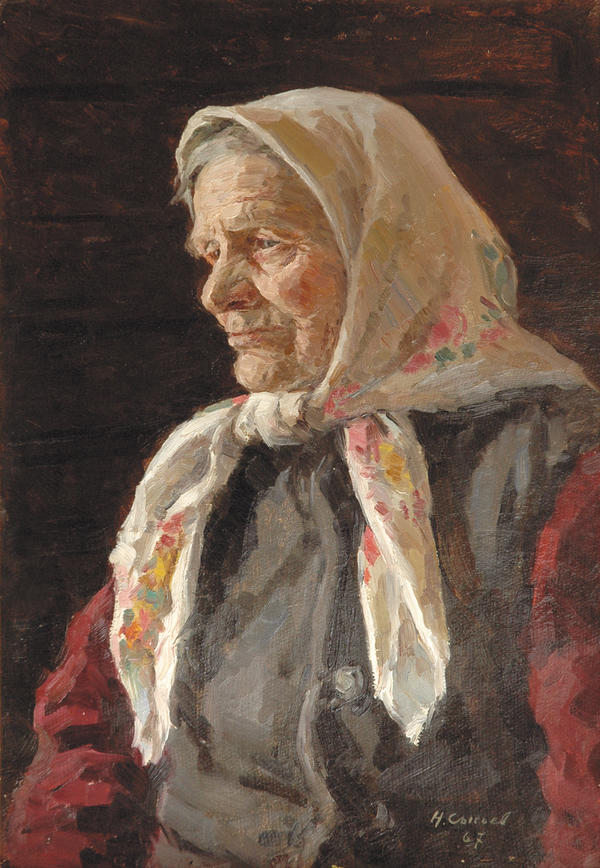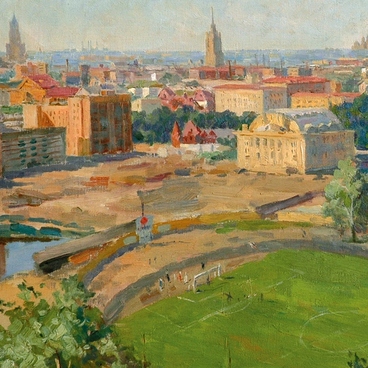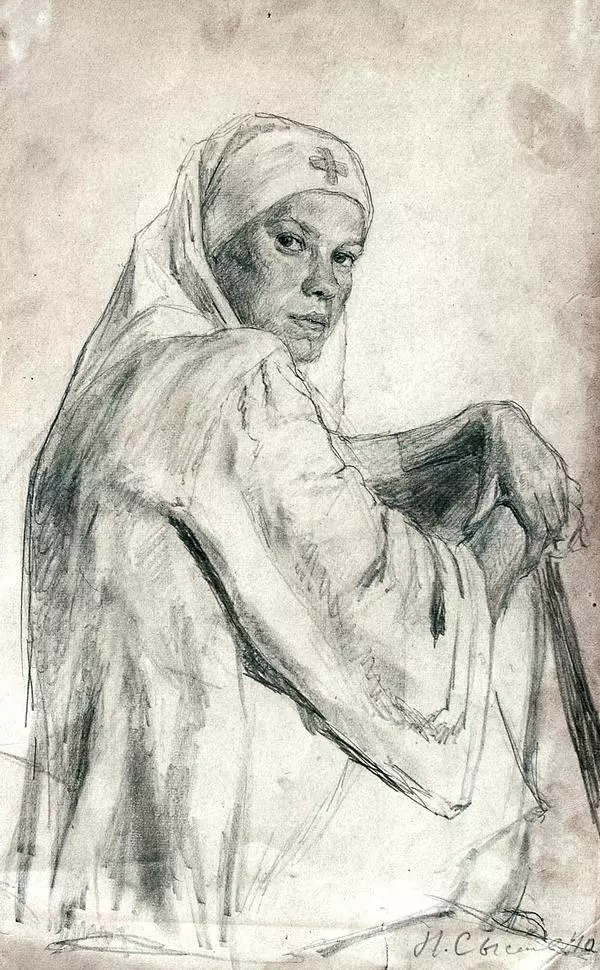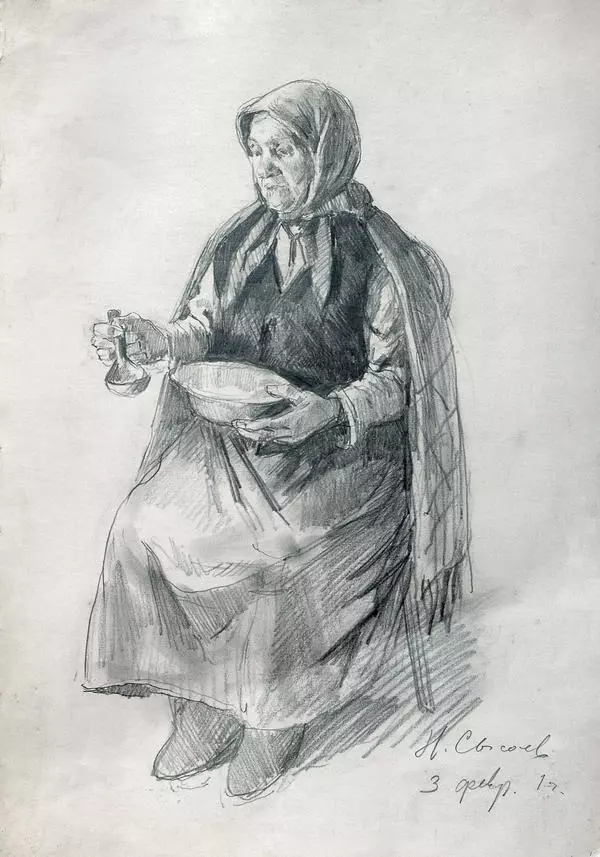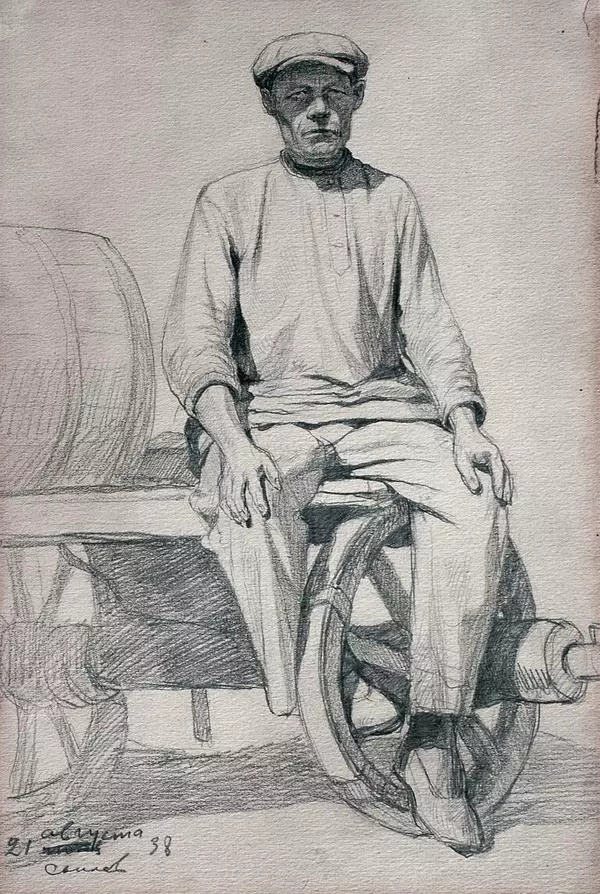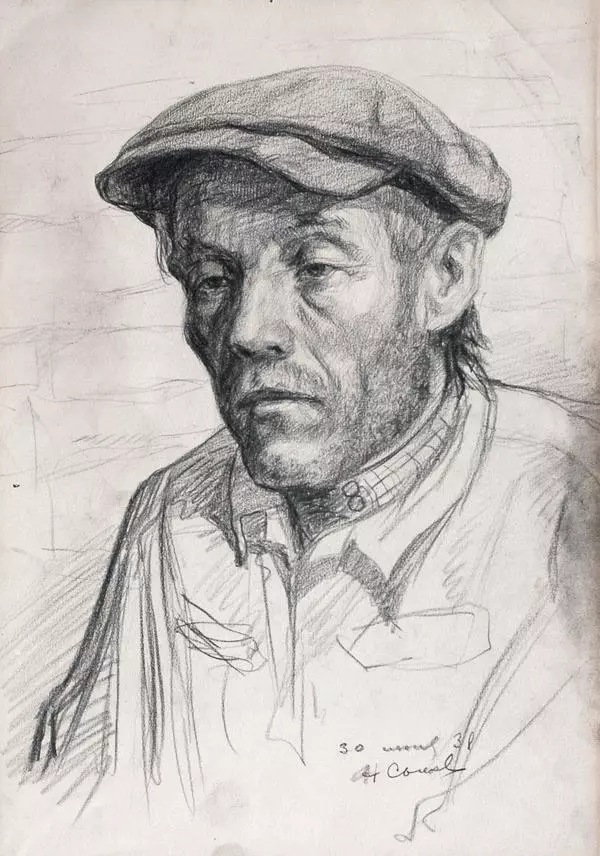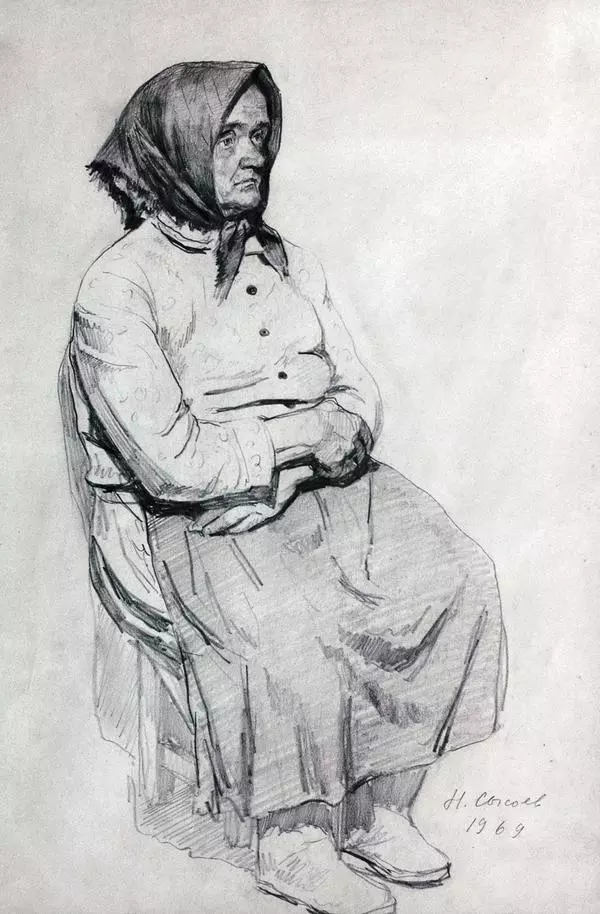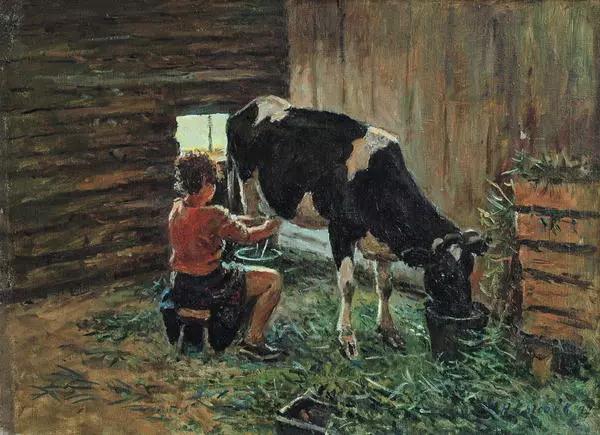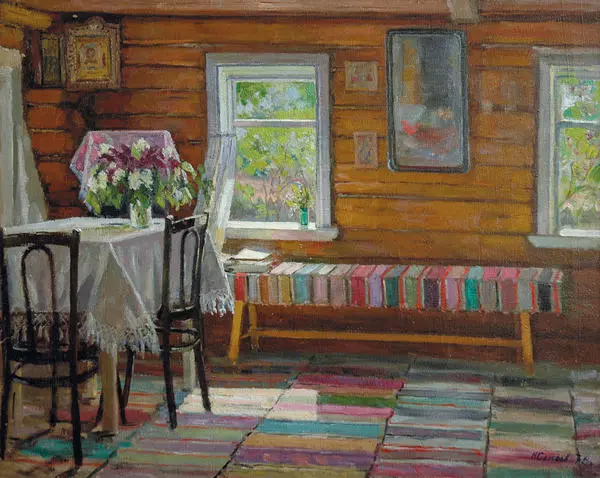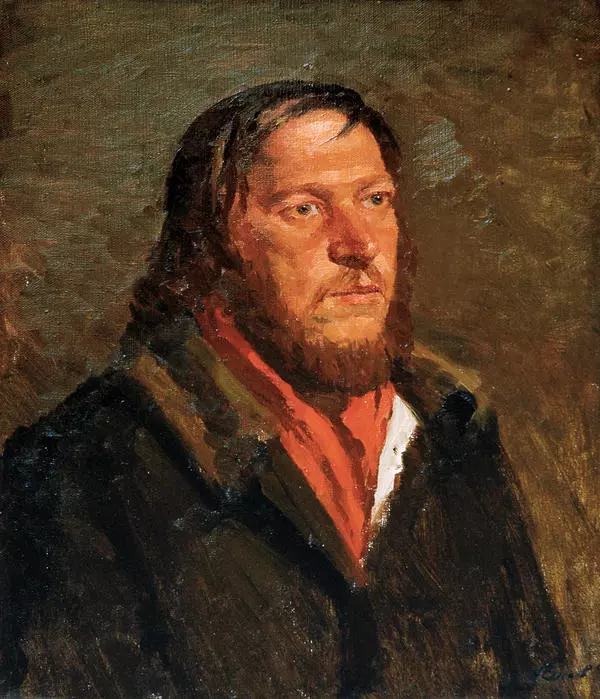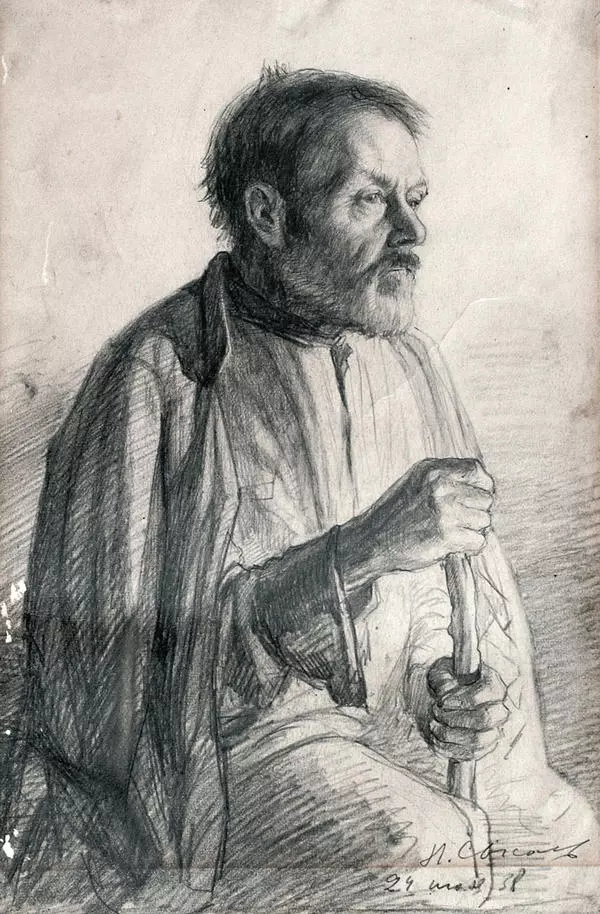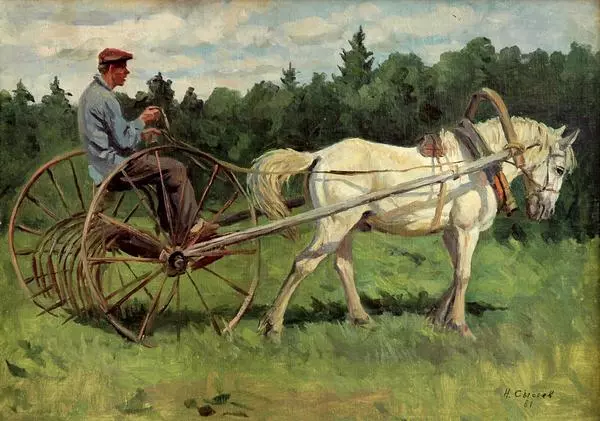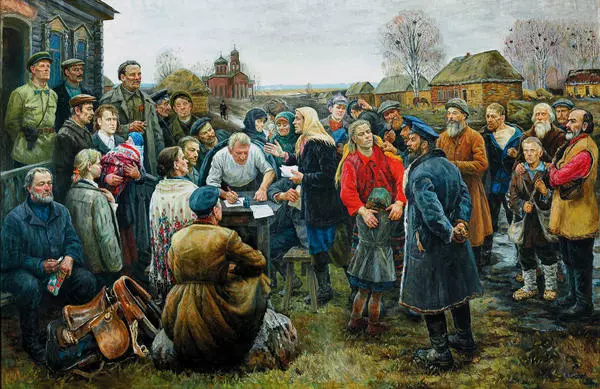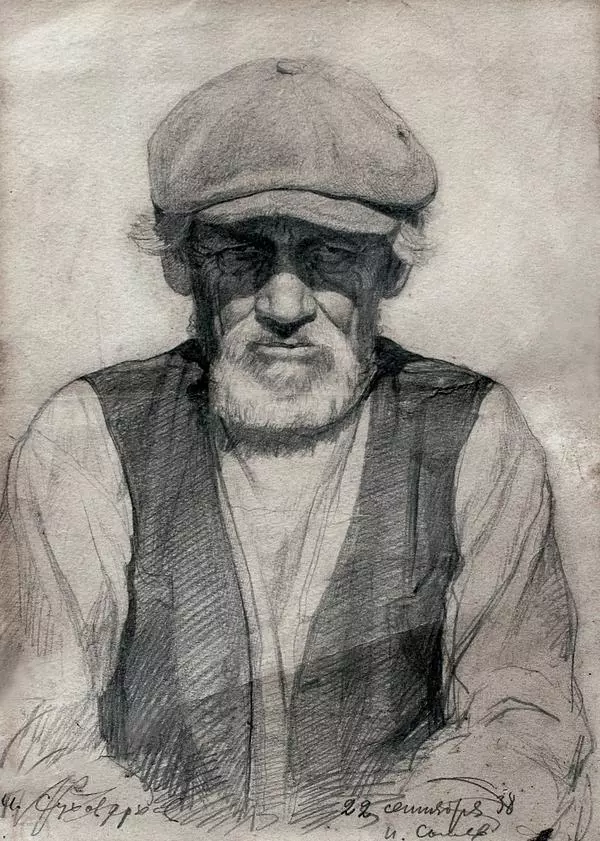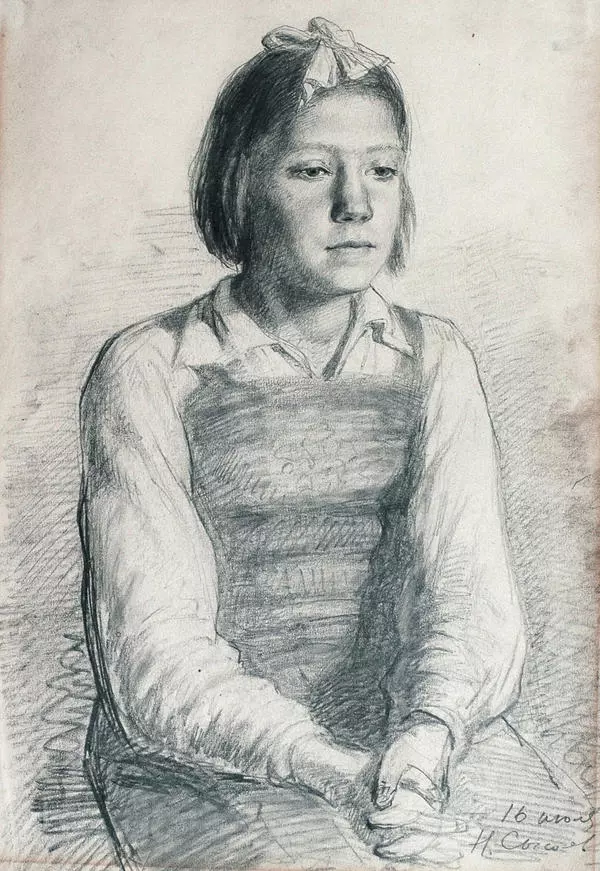Nikolai Sysoev often focused on the themes of war and patriotism. A good example of this is the cycle In the Years of the War, Mother and Seeing off the Partisan Detachment. The central figure in these is the generalized image of the mother, a simple Russian woman who found herself in the enemy occupied territory during the World War II.
The artist was inspired by the real story he had read in the Pravda newspaper in 1965. It was about a 93-year-old woman from the village of Dyadkovo in Bryansk Region who found a wounded partisan commander named Olshevsky during the World War II and saved him by hiding him in her house, nursing him back to health then taking him to a partisan detachment. After the war, the former commander came to the region for a partisan rally and quite unexpectedly bumped into the woman who had saved his life. She was 115 at the time!
A series of three paintings was conceived by the artist the same year he read the article, 1965. The central canvas Mother was painted first, in 1967. The woman depicted in the picture is a mother exhausted by the anxiety of worrying about the fate of her country, and of her children and grandchildren who had gone off to defend their Motherland. Instead of a bundle of firewood, she brought a wounded partisan from the forest, and then she nursed him back to health with care and tenderness and returned him to the ranks of the defenders of the motherland. Such moral and physical strength is rooted in patriotism, which manifested itself in the numerous heroic deeds of the Soviet people in the rear and on the frontlines of the Second World War.
Sysoev spent ten years researching and collecting the necessary materials for the series: he started preparatory drawings in 1967, but it was only in 1977–1980 that the actual painting work was done. The artist made a great number of sketched from 1967 onwards, which always started to pile up in the winter and spring, as the story unfolded during these seasons. The artist painted sketches that captured the mood, images and the expressiveness of the characters.
The painted sketch of 1967 is a coloured version of the pencil drawing the artist did in 1966, which can also be seen at the exhibition. In the sketch, the artist depicted the woman’s entire figure, while in the study, he focused on drawing her face. With thick strokes, the painter works through all the details of the portrait, including wrinkles, the expression of his subject’s eyes, the barely noticeable caring smile, the floral pattern of the handkerchief and the cotton vest. In this portrait, Sysoev tried to convey the entire range of the old woman’s feelings, who once again felt like a caring mother, this time to soldier she did not even know.
The canvas Mother was displayed in Moscow on three occasions in 1967: at the Zonal, Republican and All-Union exhibitions dedicated to the 50th anniversary of the Russian Revolution. This painting earned the artist a diploma from the Council of Ministers of the RSFSR.
The artist was inspired by the real story he had read in the Pravda newspaper in 1965. It was about a 93-year-old woman from the village of Dyadkovo in Bryansk Region who found a wounded partisan commander named Olshevsky during the World War II and saved him by hiding him in her house, nursing him back to health then taking him to a partisan detachment. After the war, the former commander came to the region for a partisan rally and quite unexpectedly bumped into the woman who had saved his life. She was 115 at the time!
A series of three paintings was conceived by the artist the same year he read the article, 1965. The central canvas Mother was painted first, in 1967. The woman depicted in the picture is a mother exhausted by the anxiety of worrying about the fate of her country, and of her children and grandchildren who had gone off to defend their Motherland. Instead of a bundle of firewood, she brought a wounded partisan from the forest, and then she nursed him back to health with care and tenderness and returned him to the ranks of the defenders of the motherland. Such moral and physical strength is rooted in patriotism, which manifested itself in the numerous heroic deeds of the Soviet people in the rear and on the frontlines of the Second World War.
Sysoev spent ten years researching and collecting the necessary materials for the series: he started preparatory drawings in 1967, but it was only in 1977–1980 that the actual painting work was done. The artist made a great number of sketched from 1967 onwards, which always started to pile up in the winter and spring, as the story unfolded during these seasons. The artist painted sketches that captured the mood, images and the expressiveness of the characters.
The painted sketch of 1967 is a coloured version of the pencil drawing the artist did in 1966, which can also be seen at the exhibition. In the sketch, the artist depicted the woman’s entire figure, while in the study, he focused on drawing her face. With thick strokes, the painter works through all the details of the portrait, including wrinkles, the expression of his subject’s eyes, the barely noticeable caring smile, the floral pattern of the handkerchief and the cotton vest. In this portrait, Sysoev tried to convey the entire range of the old woman’s feelings, who once again felt like a caring mother, this time to soldier she did not even know.
The canvas Mother was displayed in Moscow on three occasions in 1967: at the Zonal, Republican and All-Union exhibitions dedicated to the 50th anniversary of the Russian Revolution. This painting earned the artist a diploma from the Council of Ministers of the RSFSR.

